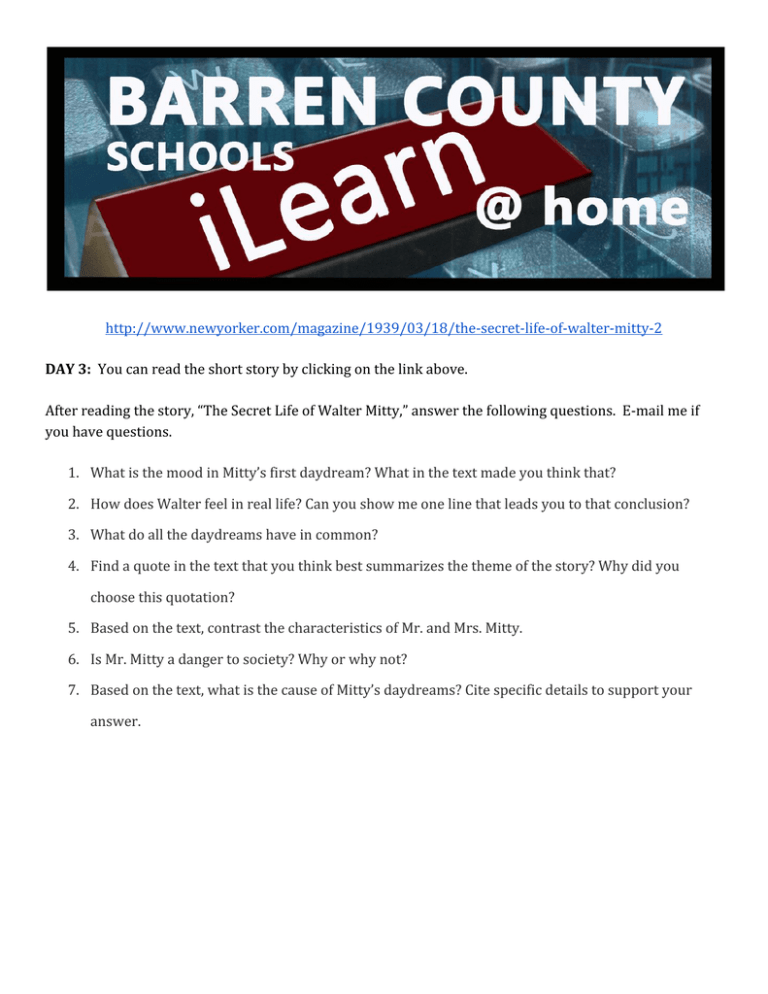

They are joined by one of the attending physicians, Dr. When he passes a hospital, it inspires another daydream that, like the first, begins without preamble: Mitty, a world-renowned surgeon, is told by a “pretty nurse” that a millionaire banker, Wellington McMillan, is desperately ill. (It is a cold day.) To placate her, he puts on the gloves, then pulls them off again once she turns to leave-only to hastily put them back on minutes later when a policeman yells at him for idling at a green light.Īfter some time driving nowhere in particular, Mitty heads for a parking lot. Lastly, she scolds him for not wearing his gloves. Before she leaves, she tells him to buy overshoes (galoshes), overruling his meek protest with a reminder that he’s not young like he used to be. In the town of Waterbury, Mitty drops his wife off at a beauty salon. Discerning that Mitty has been lost in thought, his wife says, “It’s one of your days” and suggests he let his doctor look him over (Paragraph 3).

Nevertheless, he quickly obeys her order.

The man is Walter Mitty, and for a moment he does not recognize his wife beside him: “She seemed grossly unfamiliar, like a woman who had yelled at him in a crowd” (Paragraph 2). The scene ends abruptly, and the next passage reveals that it was all a daydream-the idle reverie of a man driving into town, his wife jarring him back to reality by urging him to drive more slowly. ‘The Old Man ain’t afraid of Hell!’” (Paragraph 1). An immense “eight-engined Navy hydroplane” hurdles into the maw of a gathering storm, piloted by the Commander, who coolly ignores his lieutenant’s fearful protests that a hurricane is brewing, while his stout-hearted crew looks on admiringly: “‘The Old Man’ll get us through,’ they said to one another. The story opens in medias res-mid-action and without preamble-in the heightened style of a pulp adventure: “‘We’re going through!’ The Commander’s voice was like thin ice breaking” (Paragraph 1). This guide refers to the story as it appeared in The Thurber Carnival (Harper and Row), a selection of Thurber’s stories and sketches that first appeared in 1945. These include the siren-song of cultural tropes the emasculation and/or infantilization of modern man marital discord and the ambiguous nature of the imagination. Along the way, however, Thurber explores numerous themes, which are no less humorous, in his wry treatment, for their essential seriousness. The story’s action, which juxtaposes Mitty’s fantasized exploits with his mundane day-to-day life, generates no significant change or self-reflection in its milquetoast protagonist: The story’s close finds him much the same person as he was at the start. Unlike most classic fiction, “The Secret Life of Walter Mitty” portrays little or no character arc.


 0 kommentar(er)
0 kommentar(er)
